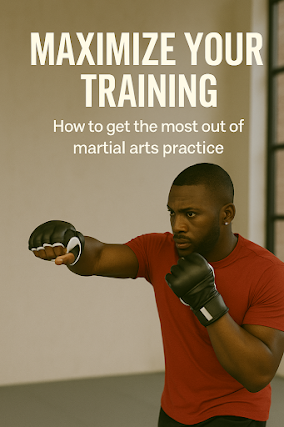Owning Your Responsibility in Self-Defense and Protection
Restita DeJesus
When it comes to self-defense, there’s one truth that cuts through the noise: you are your first responder. Not the police, not the neighbor, not even your loyal German shepherd. You are.
While we’d all love to live in a world where danger is rare and people mean well, real-world experience—and martial arts training—teaches us that prevention, awareness, and preparation are non-negotiable responsibilities. Self-protection isn’t about paranoia. It’s about empowerment.
🥋 The Warrior’s Mindset: Why Responsibility is Key
At the heart of every martial art is one unshakable principle: accountability. Whether it’s mastering a form, doing self defense drills or controlling a technique—your safety and success lie in your own hands. That same mindset applies to life outside the dojo. Recently, my Tai Chi instructor, Master Yijiao Hong told our class "You can practice for 30 years, but if you're not accountable (for skills), then it's nothing."
You cannot outsource your safety.
Yes, there are security systems and emergency services, but if something happens in the first 30 seconds—those seconds belong to you. The better prepared you are, the less likely you are to panic or become a victim.
As my Kajukenbo Instructor, GM Terry Faircloth told classes time and time again: "you don't need a black belt to protect yourself".
🏡 Securing Your Castle: Smart Perimeter Protection
Whether you live in an apartment or a house, there are steps you can take to keep danger at bay—literally.
🔐 1. Start with Visibility
-
Exterior lights should be motion-activated and cover entrances, driveways, and blind spots.
-
Trim hedges and trees to eliminate hiding spots. Burglars love overgrown landscaping.
🚪 2. Fortify Entry Points
-
Use solid-core doors with reinforced frames.
-
Add deadbolts, door jammers, and security strike plates.
-
Consider smart locks or video doorbells for monitoring and alerts.
🪟 3. Secure Windows
-
Install pin locks or security film on ground-level windows.
-
Consider window alarms or impact sensors—especially in hidden or shadowed areas.
🧠 Everyday Self-Protection Habits That Matter
Self-protection is more than a self defense move or a concealed carry—it’s also how you live.
🧍♂️ 1. Walk Like You Belong
-
Predators look for easy targets. Confidence deters threats.
-
Make eye contact, walk tall, and stay aware of exits and surroundings.
📵 2. Ditch the Distractions
-
Keep your head up, especially in parking lots, elevators, or transitional spaces.
-
Your phone can wait. Your life cannot.
👀 3. Trust That Gut Feeling
-
Your intuition evolved for survival. If a person or place feels off, trust it.
-
Give yourself permission to say "no," leave, or create distance.
🧰 Other Useful Tools and Mindsets
🛠️ Layers of Protection:
-
Security cameras aren’t just for evidence—they’re a deterrent.
-
Alarm systems are still relevant—go for monitored ones if possible.
-
Dog bowls, beware of dog signs, or even a fake camera can give intruders second thoughts.
📚 Train the Mind, Not Just the Body:
-
Run drills at home—what would you do if someone forced their way in? Where are your exits? What can you grab? The drills can be mental too, such as scanning for the exits and possible self defense tools while at a public venue (restaurant, theater, etc).
Take classes that teach self defense. Realize that some of the techniques might seem gritty and violent....i.e. gouging the eyes, kicking knees, striking the throat, etc. But, if someone is intent on causing you or your loved ones harm, these are necessary. As my Kajukenbo teacher said "Any self defense situation is where someone chooses the time, the place and the opportunity to cause you harm". YOU have the choice to gain the skills to defend yourself and your loved ones.
There are mixed opinions about weaponry, but if you choose to have firearms for home defense, get trained in it. Practice often. Be vigilant about locking up the weapons if there are children in the house, and know how to access the weapons in any scenario....in the dark, etc.
☎️ Have an Emergency Plan:
-
Create a code word with family or roommates.
-
Practice home invasion scenarios just like fire drills—yes, even with kids.
🧘♀️ Calm Is a Skill: Train It
All the gear in the world won’t help if you freeze under pressure. Martial arts builds that inner calm. Meditation helps, too. In a crisis, your breathing can be your weapon. Control your breath, control your actions, control your thoughts. Train it diligently.
💬 Final Word from Sifu Restita:
Self-defense isn’t just about throwing punches or wielding a weapon—it’s about ownership. Your body, your space, your life—you’re responsible for protecting it.
And guess what? That’s not a burden. It’s a gift.
Because the more capable you are of protecting yourself, the less you have to live in fear.
So be aware. Be prepared. And most of all—be unapologetically ready.











.png)

